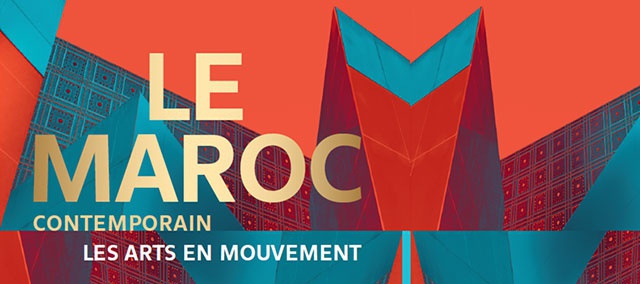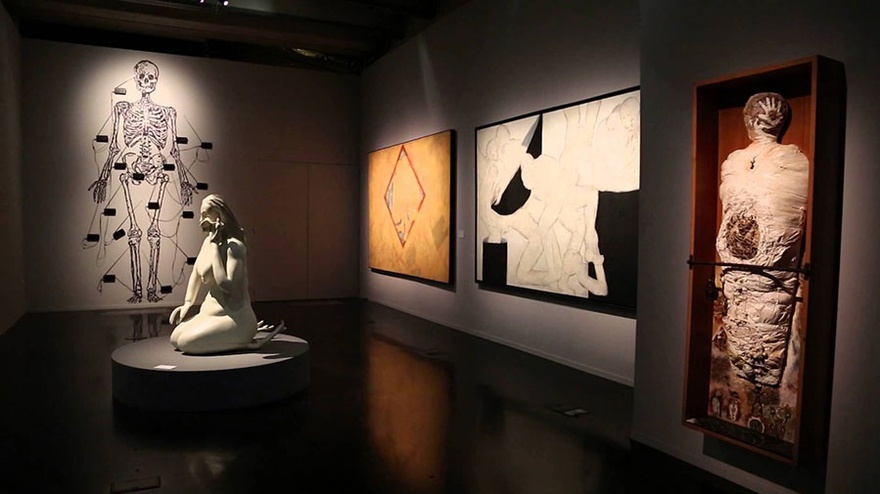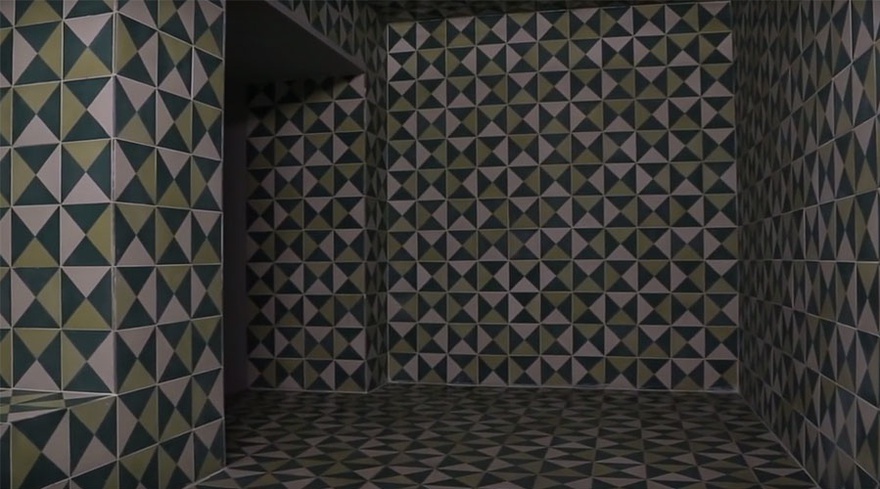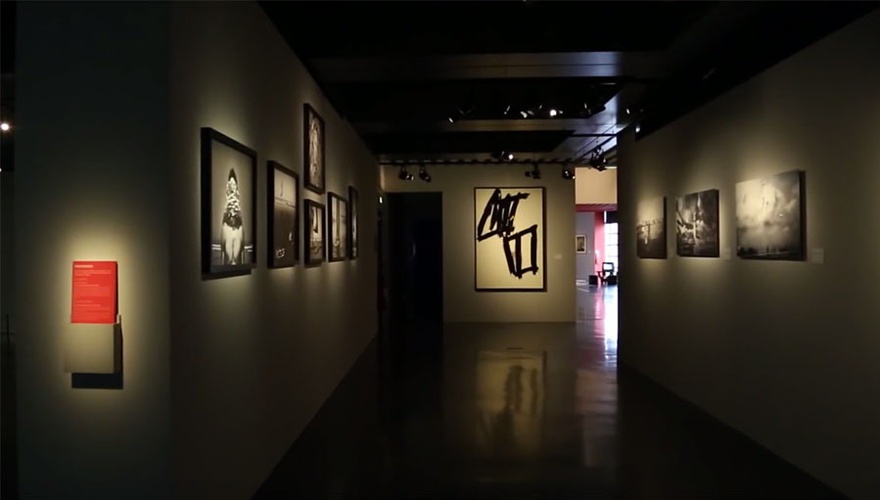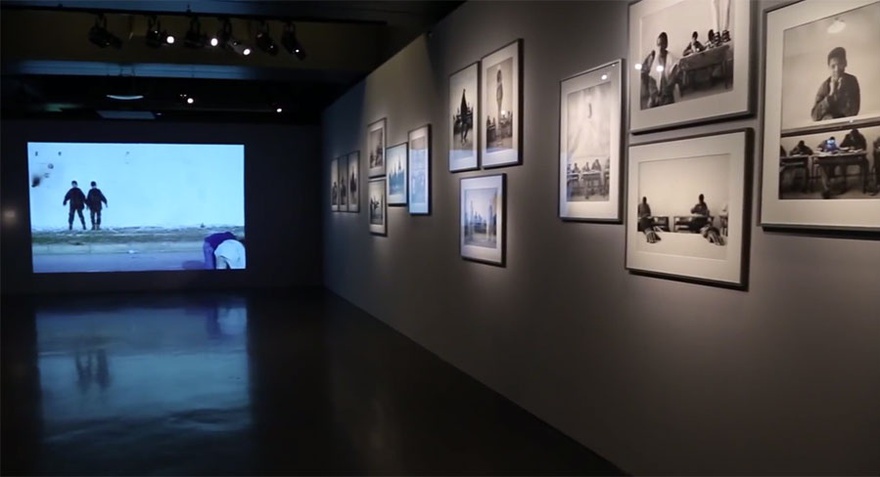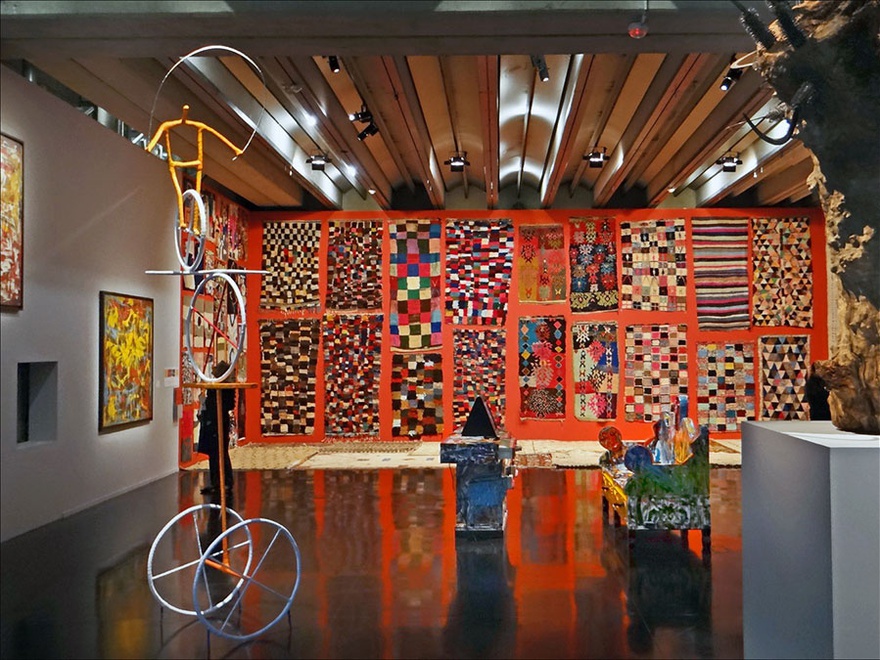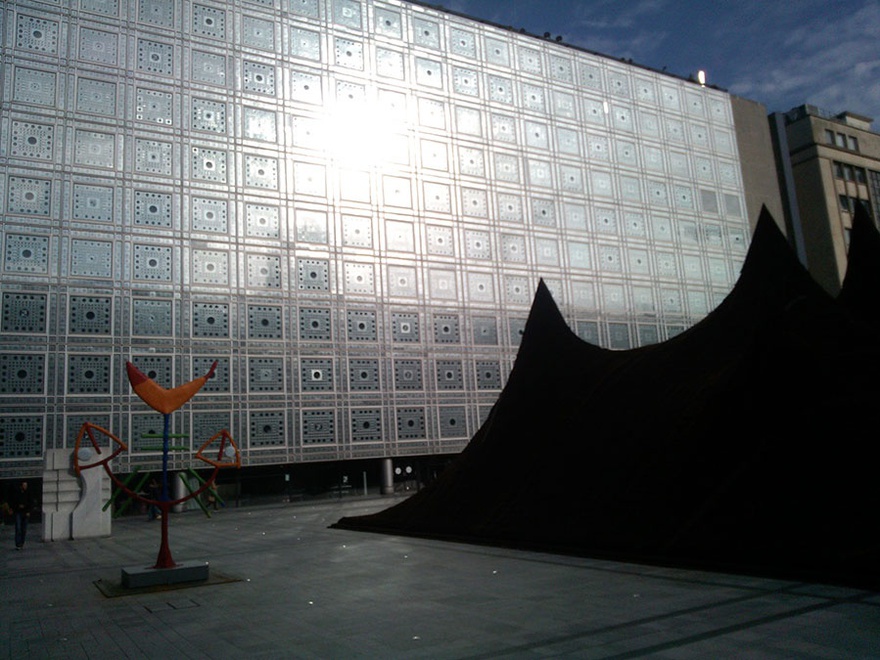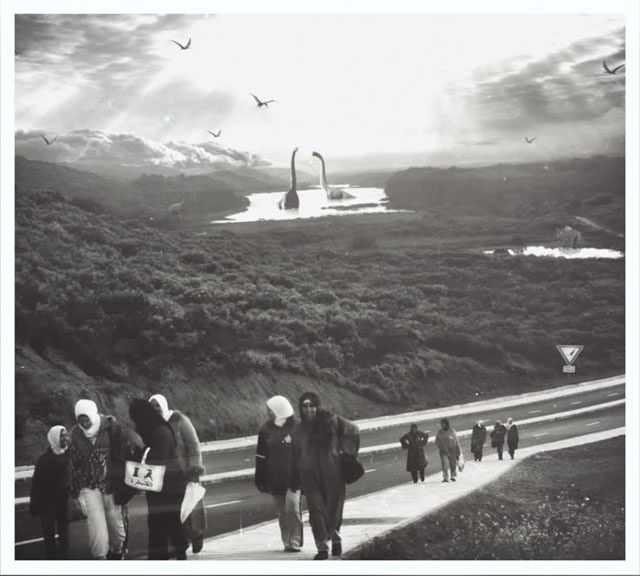Essays
A Faustian Pact
Notes on Geo-cultural Exhibitions
'I admit you to existence, within my system. I create you afresh.'
– Edouard Glissant, Poetics of Relation, 1997
What is at stake when we frame artworks through the aperture of nation or region? Considering the well-trodden terrain of this ever-revolving debate, there are, of course, pragmatic advantages to the geo-cultural strategy when deployed to address a western bias that has long existed in institutions and the art world. The most optimistic horizon for these kinds of exhibitions can be ascribed to a kind of 'strategic regionalism' – a frontline action that seeks to rewrite art histories and rebalance contemporaneity. However, once established, this frontline should be rapidly surpassed, just as artists who associate as being from one nation or region often shift this particular focus on their work once their visibility has been established. An obvious problem with the geo-cultural exhibition is that the narrow organizing principal of nationality or region breaks down as soon as it is established, contested by considerations of diaspora, diversity, ethnicity, language and history. Indeed, many such exhibitions use this problem as an internal strategy, following a 'logic of contestation and correction',[1] for example using national ascription only to show how the art exhibited breaks down the moniker.
The following essay is written in response to the geo-cultural exhibition, through both the historical trajectory that links the World Fair to the its contemporary manifestation – the biennale – and through the specificity of a recent exhibition Le Maroc Contemporain (2014–15) at the Institut du Monde Arabe, as symptomatic of the diplomatic and political entanglements that this kind of exhibition making is intrinsically exposed to.
Despite the corrective intention, and rhetorical absorption of contestation, the spectre of power still looms uncomfortably large especially when western institutions are hosting these shows. On a fundamental level, if the purpose of curating is to enable viewers to 'read' or access artworks through selection, display and mediation, geographical centricity instead obfuscates, building barriers to understanding and shortcuts of signification, promulgating an aesthetics that is better adapted to the tourist industry than truly representative of art. At its very worst could the geo-cultural exhibition be read as a neo-colonial act of nationalistic and regional inscription that reinforces 'otherness' and shores up the sustaining hierarchies of difference? Or, in observing the flows of power through the examples of specific exhibitions emerging from a history of contaminated display, commerce, empire and regionalism, can a more complex and dialectical tendancy be observed in the contemporary geo-cultural exhibition, one in which the power to represent, and the power to project a particular image, meet in the exhibition space?
The legacy of the World Fair haunts the geo-cultural exhibition in an entangled history of display, commodity, and the shoring up of the nation state through a presentation and ossification of the 'other' as 'that which we are not'. At the height of Empire and the Industrial Revolution, the World Fair was developed as a specific technology of display that mediated and taxonomised specific forms of 'otherness' to the British public, creating a unified 'audience', and birthing an educated connoisseurship of commodities. World Fairs staged across Europe, most notably the Great Exhibition in London (1851) and the Exposition Universelles in Paris (1855) acted as 'sites of pilgrimages to the commodity fetish'[2], showing raw materials, goods and even people gathered from across the colonies, separating 'goods' on display by nation state. 'World's fairs in the age of empire had turned into major platforms of the global imagination on which the idea of empire, progress and the commodity all appeared rolled into one. Total events of this sort were predicated upon carefully orchestrated staging of spaces, global actors, and goods that spoke no so much of the world as it is as of how the West wished to perceive it.'[3] This reading is vital to the understanding of the power of these traditions of display and exhibition, as forming a new ordered vision of the world in which the spectator was positioned as both superior and unified: a subject of an empire whose gaze held together the disparate and chaotic reaches of the globe in taxonomised fixity.
How far, then, does the globalized contemporary art world, that nevertheless remains profoundly western-centric, act as extension of this specifically commoditized tradition of geographical display and distribution of the 'Other'? The Biennale model has rapidly popularized since the 1980s in correlation with the globalization of the art world at the end of the Cold War and the opening of previously impervious regions to free market economics. This can be read as a direct continuation of the logic of the World Fair, twisted now to suit narratives of neoliberal economics rather than those of colonialism and the Industrial Revolution. Here, though, the logic has been inverted so that it is the occurrence of the biennale itself, which stimulates a local economy through tourism and international recognition; whilst the content – contemporary art – paradoxically both loses its national specificity by increasingly featuring a cadre of artists whose names reappear globally and whose work is superbly able to respond to context, and vampirically seeks to rejuvenate itself through the inclusion of artists from 'exotic' locales.
Perhaps nowhere is the commoditized tradition of geographical display best, and most uncomfortably, felt than in the structure of the Venice Biennale, whose genus was almost at the same historical moment as the World Fair. Initially conceived as a biennial exhibition of Italian art in 1893, the Biennale quickly grew in ambition to include international presentations hosted by specific nations. Today, the national cluster of pavilions in the Giardini and spaces of the Arsenale continue to grow, whilst offsite national pavilions fluctuate according to access to funding. Attempts to disrupt this nation-based logic are revelatory of the discomfort around the imperial hierarchies it continues. Various strategies are employed, such as joint presentations between nations, hosting artists from other countries, pavilions that overplay locale to amplify the exclusionary basis of the framing, such as the Peckham Pavilion, or disavow it all together, as is the case with the Diaspora Pavilion, which will be staged in 2017. Also in 2017, Dutch artist Wendelien van Oldenborgh will tackle the issue head on with her project Cinema Olanda which seeks to directly challenge the Netherland's representation of itself as a nation, partly through the technology of the pavilion's own architecture, a Rietveld building that speaks of modernism, transparency, future-orientation and rationality, countered with films that document the lived experiences of many Dutch activists, artists, musicians and cultural producers in the Netherlands. This acknowledgement of the Biennale as a technology for national representation, and the centrality of architecture to this order, is worth bearing in mind with regards to the Institute du Monde Arab, which we will come to later.
Biennales themselves are transforming to address their easy instrumentalization by local politics and city planners, showing a tendency to decentralise, to complicate their location, and indeed their temporality, in order to map out from the nationalistic or region specific,and address multiple territories whose geographic spread brings thematic concerns into new contexts and generates new readings. The Sharjah Biennial 13, curated by Christine Tohme, is being staged across Sharjah, Dakar, Istanbul, Ramallah and Beirut, emphasising the networked nature of artistic activity in the region and to cultivate new collaborations. documenta 14 is taking place in Kassel and Athens, allowing organisers a new locus from which to stage commentary regarding the Global South and coming close on the heels of the nation-state as the heated fulcrum for the debate regarding the overreach of the European Union's austerity drive. It remains to be seen if this choice of location has been meaningful or indeed fruitful for the locale that hosts it, or if the project indeed justifies documenta's claims to the 'South'.
If artistic and curatorial strategies can be brought to bear on the problem of national representation as embedded in exhibition making, as seen in the example of specific pavilions at the Venice Biennale and the decentralisation of the biennale model itself, can a still more complex reading of the geocultural exhibition be staged through the figure of the artwork as commodity, which predominated at the World Fair, and continues in the unregulated commodity art market whose expansion into territories such as South America, Asia and the MENASA region has run in parallel with the increased representation of these territories through geo-cultural exhibition making? Can an art object as commodity, forced to stand in as an artefact or representation of a nation or geographical territory, be recuperated as performing an inversion of the power structure it finds itself in?
A mechanism towards an understanding of this function can be found in the 'ethno-commodity', as defined by John & Jean Comaroff. In their schema the ethno-commodity is formulated initially in relation to forms of tourism in which culture is objectified and branded to attract 'investment'. It disobeys the usual laws governing exchange and use value in that its authenticity is not depleted through reproduction. Most importantly for the exhibition of art works, it is also able to reconstitute itself as a positive point of identity formation for the groups that wilfully author or perform it. As such it brings together branding and marketing with culture and identity to produce a 'culture' brand that is both object and idea, one that asserts 'a collective subjectivity by objectifying it for the market'.[4] It 'appears to (re)fashion identity, to (re)animate cultural subjectivity, to (re)charge collective self-awareness, to forge new patterns of sociality, all within the marketplace.'[5] Thus a circle of consumption is built, in which the producer also becomes a consumer of his or her own enaction of a cultural identity. One example cites the Xavante, who 'by means of their dance performances sought to enrich their conditions of existence in the Brazilian Amazon by impressing on outsiders their status as "indigenous peoples" with the entitlements that now entails'.[6] So whilst the prevalence of the ethno-commodity points to our own (in the western world) loss of 'Geist' or collective culture and subsequent pursuit of the ethno-commodity, it conversely can actively reaffirm the 'culture' that self-consciously deploys it. The liberatory potential herein is anchored in the actor's own ability to author a collectivity for objectification, rather than that provided to them. As such, a geo-cultural logic as militated by a set of artists can be read optimistically – how often this is the case is rather more cause for pessimism.
When thinking about the agency of artists in asserting, withholding and complexifiying a national or regional ascription, the Martinican writer and theorist Edouard Glissant delineates a beautiful and generative provocation – that of the right to opacity. He states, 'If we examine the process of "understanding" people and ideas from the perspective of Western thought, we discover that its basis is this requirement for transparency. In order to understand and thus accept you, I have to measure your solidity with the ideal scale providing me with grounds to make comparisons and perhaps judgments. I have to reduce.'[7] Against this debilitating reductionism, Glissant makes the case for a constructive opacity which can operate as a basis for participation, on that does not signal 'enclosure within an impenetrable autarchy but subsistence within an irreducible singularity. Opacities can coexist and converge, weaving fabrics.'[8]
From this position a participatory basis is grounded that works against the western tendency to taxonimise, to striate cultural production into manageable and digestible fragments of 'sameness' through narratives of nation, ethnicity or region, but rather to allow for the irreductibility of practices, cuing a simultaneous breaking open of western universalism, escaping comprehension and already entangled in partial frames of reference, or out-rightly mistranslated and to acknowledge the freedom and beauty inherent to this. As Glissant puts at stake, the ideal of a relation 'the whole is not the finality of its parts: for multiplicity in totality is total diversity.' In this regime the tendency of the geo-cultural exhibition to make an artists work transparently stand as an expression of a nation-state, or region, is to demand transparency. The onus should be firmly on a slippery and ceaselessly multiplying opacity, that might create new chains of meaning, new relations, and new narratives; ones that productively and generatively challenge officialised and sanctioned myopias, so present and weaponized today in global right-wing politics.
***
To turn now to the specificity of one exhibition, a number of questions should be asked of the geo-cultural exhibition, which cut though three frames: i) selection / selector of works, ii) mediation and rhetoric, iii) reception and affect. These frames provoke central questions; who is making the show? For which institution? Why now?
To consider these questions, this section will focus on Le Maroc Contemporain (October 2014–March 2015), an exhibition that took place at the Insitut du Monde Arabe in Paris curated by Jean-Hubert Martin, and associate curators Moulim El Aroussi[9], and Mohamed Métalsi.[10] The exhibition featured over 300 works by 80 artists, designers, musicians and filmmakers who live in Morocco (25% of which were women). The exhibition was staged across 2,500 square meters, and was the result of far reaching research trips in Morocco over the period of a year, which took in regions little visited by curators, such as the south of the country. Including lions of the sixties scene, such as Melehi Belkahia and El Ghrib, a younger generation were also represented, such as Leila Alaoui, Hicham Benohoud, Younes Rachmoun, Mehdi-Georges Lahlou, Randa Maroufi, alongside emerging names. Attended by 150,000 visitors, the exhibition was extended due to popular demand. The exhibition's rhetoric centred on celebrating the plurality of the territory that defines contemporary Morocco. In exhibition texts, emphasis is placed on the number of languages and ethnicities present in the nation; indeed the exhibition itself included the text of the preamble of the Moroccan Constitution, which recognises the diversity of the countries population – whilst explicitly tying the exhibition to a state-sanctioned narrative.
The length and breadth of research for the exhibition is impressive and self-evident. These structural conditions should be widely acknowledged – typically a curator will spend a few weeks at most in a country, guided by their own embassy, one specific institution, or funding body. In these scenarios what is the level of access afforded, and to which set of artists? Who is visible? This is not to say that curators should be trapped in a paralyzing criticality when looking to cultures outside of their own, but that we should be aware of the nexus of power relations and access to traditions outside our own.
The exhibition's vast and almost unmappable array of exhibits were thematically organised under the following headings: Fantasize, Pioneers, Organise, Combine and Destroy, Sufism, Emigration, Interrogating Conventions, Embodying, Questioning Belief, Responding to the Arab Spring. The choice of these was guided by the works themselves, but when listed are revealing in their arbitrariness and limited scope. Despite the potential political nature of the thematics, criticism of the exhibition noted a 'lack of politics'.[11] Indeed, what haunted the exhibition, and was amplified in its repression, was the subject of the ongoing conflict in the Western Sahara, a territory signed over to Morocco after the Spanish withdrew in 1975, and one of the longest running conflicts in the world today. Another recurrent criticism was levelled at the exhibition's lack of coherence; that it seemed 'to lack a binding thematic thrust,' with 'the vast number of topics' often 'detracting from the coherence of the experience as a whole.'[12]
The curatorial strategy effects many movements. First, IMA avoids the risk of imposing a colonialist or outsider narrative through appointing two Moroccan academics as associate curators to their French curator. Second, the curatorial team chose to create a multidisciplinary exhibition, side stepping a critique of imposing the aesthetic regimes of a western-formed canon whose latest expression is in a particular mode of contemporary art. Here, we see at work the use of the corrective methodology: establishing an edifice – 'Morocco' – through the appeal to the nation state as organising principal, only to undo it through the heterogeneity of works. Third, instead of creating a tight show featuring a considered selection of artists, the curators included as many practitioners as possible, no matter their age, training or position: a radical strategy of inclusivity which could problematically undermine quality and the very real hierarchical structures within the Moroccan art scene. Indeed, one journalist noted that established artist Fouad Bellamine withheld works from the exhibition due to the latter issue, asking whether an exhibition of French artists in Venice would include portraitists from the streets of Montmartre, and if not, why this curatorial logic has been imposed on Morocco.[13] Fourth, the use of themes as an aid to navigation through the show is problematic in its reduction of works to illustrations of those notions: a reflection of a demand that these works be legible or transparent, through those imposed frames – a trope often demanded of the art object caught in the representational matrix of the geo-cultural exhibition.
The specific history of the building of IMA is also worth considering in this political and representational matrix. Founded by 18 Arab states in collaboration with the French government in 1980, the building was part of Francois Mitterand's 'Grand Projects', an ambitious program of building contemporary monuments for the city of Paris whose architecture was compatible with the image of socialism. The institute was founded to foster dialogue and exchange between the Arab world and the French one, focusing on arts, science and technology. Notably this was a particularly French exchange that emphasized the 'secular' representation of Arab culture. As with so many projects of the moment a 'star-chitect' was selected, Jean Nouvel, whose eventual design incorporated huge walls of glass (the go to signifier of transparency and accessibility) with shutters that open and close on the hour, supposedly drawing from Islamic architecture's use of elements that control the climates effect on interiors. Thus the scene was set for the presentation of 'Arab' culture to a 'French' audience, one articulated by a French architect, and shaped by a French politician eager to create an new socialist imaginary of contemporary cutting edge (and expensive) architecture that could house a specifically French secularized vision of the Arab world.
In this context, a suspicion towards the geo-cultural exhibition is anchored further in the aesthetics that may be sought to support such framings. Do art works from Zimbabwe or Iran have a particular auratic quality that is somehow 'authentic', or speak a historic (and often craft orientated) vernacular? If an artwork doesn't adhere to that auratic quality is it discounted as uncategorisable, or not useful to the curatorial narrative? Further, how far can someone with a western educated set of aesthetics navigate and narrate the intricacies of thousands of years of, say, Persian artistic tradition or specific modernity? Does the curator, perhaps even subconsciously, seek work that reinforces or conforms to a sense of 'Iranian-ness' as formulated outside of that territory from the particular purview of the west – a contemporary echo of orientalism? Or do they bring their own cultural myopia to bear on the locale, in which Iraq is framed as a warzone, or Mali as impoverished? The first space that one encountered in Le Maroc Contemporain was a tiled room in colours traditional to Morocco. This appeal to what many expect from Morocco is a limiting entry point: one that reinforces expectations. One theme that was carried through the exhibition by the use of low seating areas typical of Moroccan salons in interstitial spaces of the exhibition – the spectre of the oriental lounge also reared its head as scenographic device in Catherine David's Contemporary Arab Representations; Beirut/Lebanon (2002) at Witte de With Center for Contemporary Art, where video works could be viewed from lying on carpets and sipping tea.
But such a representation is by no means one sided, particularly within the framework of the geopolitical present. In the case of Le Maroc Contemporain, the position of Morocco in France's colonial past, amidst France's ongoing neo-colonial ties to the Maghreb, and the nation's status as a foundation stone of western diplomacy in North Africa (a territory destabilized by revolution and encroaching Islamic radicalism through Libya and Algeria), is central. If Morocco is an 'imagined community' in the instance of this exhibition, it is the imagination of the French state, endorsed by the Moroccan monarch 'from day one',[14] in which the exhibition feeds into strategic cultural diplomacy that supports trade deals, investments, and judicial interrelationship – not least the fact that France is Morocco's second largest arms supplier after the US (a fact that underscores French complacency in the EU regarding the ongoing Western Sahara occupation and conflict).[15] In fact, at the same time as the exhibition was in its planning stages an unprecedented and seismic diplomatic breakdown took place between Rabat and Paris in February 2014 over accusations of systematic torture in Moroccan prisons.[16] Morocco halted judicial relations with France, effectively blocking all prison transfers and joint investigations. The impact and sensitivity of this would not have been wasted on the director of IMA, Jack Lang, who was previously a diplomat under Sarkozy's premiership. His previous political work includes special postings to North Korea and Cuba, and also prosecuting pirates operating on the coast of Somalia: all challenging and delicate frontline assignments.[17] Notably, the organizational structure of the Institute includes a Diplomatic Advisor, previously working for the French Embassies in Syria and Egypt.[18] Thus, although speculative, it is not far-fetched to consider the potential role this exhibition of Moroccan artists at the time – held to celebrate Moroccan culture and emphasize the sympathetic 'home from home' – had in supporting the easing of fractious relations.
This potential for the entanglement of exhibition making in international diplomacy and foreign relations should give extra cause for concern when considering the geo-cultural logic in making a show, given how easily instrumentalized its form can be. Take the fact that the exhibition was partnered with Le Maroc médiéval, un empire de l'Afrique à l'Espagne at the Louvre: both forming part of a Moroccan season that swept Paris in 2014 as a direct consequence of the King's donation, alongside the republic of Azerbaijan, the Emir of Kuwait, the Sultan of Oman and King Mohammed VI of 26 million euros to the new department of Islamic Art at the same museum.[19] The exhibition at the Louvre is itself part of a complex web of investment, with some funds coming from the franchising of Louvre to Abu Dhabi for $400 million over 30 years. The pair of exhibitions works to further the King's rhetoric regarding Morocco neatly, positioning it as possessing a rich and sophisticated cultural history, and an open and diverse 'contemporary' trajectory. The latter is very much in keeping with the Kingdom's hosting of the high profile recent Conference of the Parties in 2016, which continued the Paris Accord climate change talks.
In February 2016, King Mohammed VI visited Hollande in Paris where they celebrated their close cooperation on terrorism and security. His visit also included a trip to IMA, where plans were drafted for a future Moroccan Cultural Centre. What is marked in the case of the King's donation, 'blessing' of the IMA, and the centrality of culture as a diplomatic tool is the extent to which it demonstrates that cultural representation is not only a tool for the Global North to figure itself through the process of 'othering', but also the reverse situation, that the harnessing of power now flows both ways, with regimes and representatives invested in the maintenance of the national state as a player in world politics and trade oiling the wheels of commerce and ensuring representation through strategic investment in cultural schemes, exhibitions and founding of institutions. That these schemes far outstrip the resources and education afforded to artists from those regions creates a yawning gulf between the contemporary spaces built to house, and their possible content. This paradox was beautifully explored in artist Walid Raad's installation series Views from Outer to Inner Compartments (2010–11), which consisted of sculptures and projections that recreated and depicted endless empty museum spaces and architectures.
Recent discourse in decolonizing practices responds to the profound problems of cultural institutions and representation. Within this field, the movement is motivated by the recognition that aesthetics is 'an aspect of the colonial matrix of power, of the imperial structure of control that began to be put in place in the sixteenth century with the emergence of the Atlantic commercial circuit and the colonization of the New World.'[20] Exhibition making and curatorial endeavours are central to decolonizing discourses in having the potential to challenge the aesthetic hegemony fostered by an ongoing power structure of legitimation. The geo-cultural exhibition is a blunt tool in the arsenal of decolonizing discourse, its logic and limitations are rather better suited to re-inscribe power imbalances and extend neo-colonialism through emphasizing difference and thus reinforcing the centre, a power structure that has its roots in the birth of the museum itself. Decolonising practices do not ask that those outside the centres of power are absorbed into or tolerated within the mainstream, but rather that the mainstream is radically deconstructed and reformulated according to a new rationale, one divorced, along intersectional lines of solidarity, from the hegemonic narratives of patriarchy, colonialism, and hetronomativity. By using the tool of the geo-cultural exhibition to gain visibility for artists from regions outside the 'centre', we face replicating the same structures that have marginalised artists from the outset. A more radical approach is needed.
***
The geo-cultural exhibition mutates through its history as a commodity driven display from colonial territories, into an 'ethno-commodity' imported into Western frameworks to variously support cultural diplomacy, invigorate an increasingly professionalized and baroque contemporary western aesthetic, and perform in a institutional economy of accelerated museum exhibition cycles and exploding numbers of institutions wherein 'difference' and 'otherness' is a marketable draw for audiences hungry for 'newness', or perhaps to bear witness to the exotic (in the case of say Morocco) or embattled (in the case of the Middle East) other. What is the way forward within this terrain? Should curators entirely evade geo-cultural frameworks? Should artists refuse to be included in this type of exhibition? Should we acknowledge that there is a far more complicated flow of power across this matrix of representation – and if we do, who does this flow still serve, who is able to wield and deploy it beyond the field of international diplomacy? Should we acknowledge that the category provides a ripe and exhilarating moment for deviation, deconstruction and visibility beyond normative cultural stereotyping – a lived experience of art works in all their complicated and contradictory reality – and one that can be weaponised by artists to create clusters of solidarity that might provide the locus for an oppositional politics or instance of self-determination?
As an established institutional technology there is the potential for the artist to deconstruct and critique from the inside. Whilst the lack of parity in power means that often an artist has no choice but to accept a place in an exhibition that militates her nationality, this can be used firstly as a position with which to gain a platform beyond that which has been available previously. Perhaps the answer is best delineated to address different groups; yes artists can weaponise the instance of the show, yes curators may also, yes we are in the position to effectively read these shows as inscribed in particular forms of diplomacy and politics and shape our response to them effectively, but given the discomfort, the irritation, and the reducibility, the form should be moved on and away from, complicated, subverted and challenged.
Surely given the current global situation, with its fractious swing to the right, consolidation of new despotic regimes, and witnessing of territorial land grabs, hasn't it become ever more pressing to find new languages and commonalities beyond those of nation and region, which are categories daily hijacked by the right to justify their aims? In this landscape it becomes more pressing to find affinities on a global scale, between the human and non-human, art and non-art, reaching for new forms of expression and formats to host these, rather than replicate centuries old forms of appropriative representation, entanglement in capital, and institutional instrumentalisation. Our ambitions as makers should be set higher than defining the world and our practices through the national boundaries that were gifted to us by colonial, monarchic and feudal forces, and to reach for mechanisms that allow for specificity and the universal, for communication, transformation, and opacity.
[1] Edward MacDonald Toon. 'The Exhibition and the Agora: Contemporary Arab Representations', in The Barjeel Art Foundation Collection; Imperfect Chronology, ed. O.Kholeif. (Whitechapel Gallery, 2015), p. 40.
[2] Walter Benjamin, The Arcades Project, ed. Rolf Tiedemann (Suhrkamp Verlag, 1982), p. 151.
[3] Veit Erlman, 'Spectatorial Lust': The African Choir in England, 1891–1893' in Africans on Stage, Studies in Ethnological Show Business, ed. Bernth Lindfors (Indiana University Press, 1999), p. 118.
[4] John Comaroff & Jean Comaroff, Ethnicity Inc. (University of Chicago Press, 2009), p. 18.
[5] ibid.
[6] ibid., p. 27.
[7] Edouard Glissant, Poetics of Relation (University of Michigan Press, 1997), p. 101.
[8] Ibid., p. 190.
[9] Philosopher and former Director of the Education Committee of the School of Fine Arts in Casablanca.
[10] Doctor of Aesthetics and Director of the Institut du Monde Arabe's Cultural Department.
[11] 'Exhibition Report: 'Contemporary Morocco', Paris, IMA, 15 Oct. 2014–25 Jan. 2015' https://diwan.hypotheses.org/4664
[12] 'Shifting Territories in Moroccan Art', http://www.warscapes.com/reviews/shifting-territories-moroccan-art
[13] 'Le Maroc Contemporain', Nafas Art Magazine, http://u-in-u.com/nafas/articles/2014/le-maroc-contemporain/
[14] 'Grand success pour le Maroc Contemporain Paris' Le Economiste.com, http://www.leconomiste.com/article/963962-grand-succes-pour-le-maroc-contemporain-paris
[15] 'The EU, Morocco, and the Western Sahara; A Chance for Justice. European Council on Foreign Relations, http://www.ecfr.eu/article/commentary_the_eu_morocco_and_the_western_sahara_a_chance_for_justice_7041
[16] 'Morocco raises stakes in diplomatic spat with ally France', Reuters, http://www.reuters.com/article/us-morocco-france-idUSBREA1Q1ZS20140227
[17] 'Jack Lang', Wikipedia, https://en.wikipedia.org/wiki/Jack_Lang_(French_politician)
[18] 'Julien Chenivesse', Linkedin, https://fr.linkedin.com/in/julien-chenivesse-0b19018b
[19] 'Islamic Art, Covered', FT.com, https://www.ft.com/content/ad9c2ff2-f5bf-11e1-bf76-00144feabdc0
[20] Walter Mignolo and Rolando Vazquez, 'Decolonial AestheSis: Colonial Wounds/Decolonial Healings', Social Text Journal July 15 2013. https://socialtextjournal.org/periscope_article/decolonial-aesthesis-colonial-woundsdecolonial-healings/

